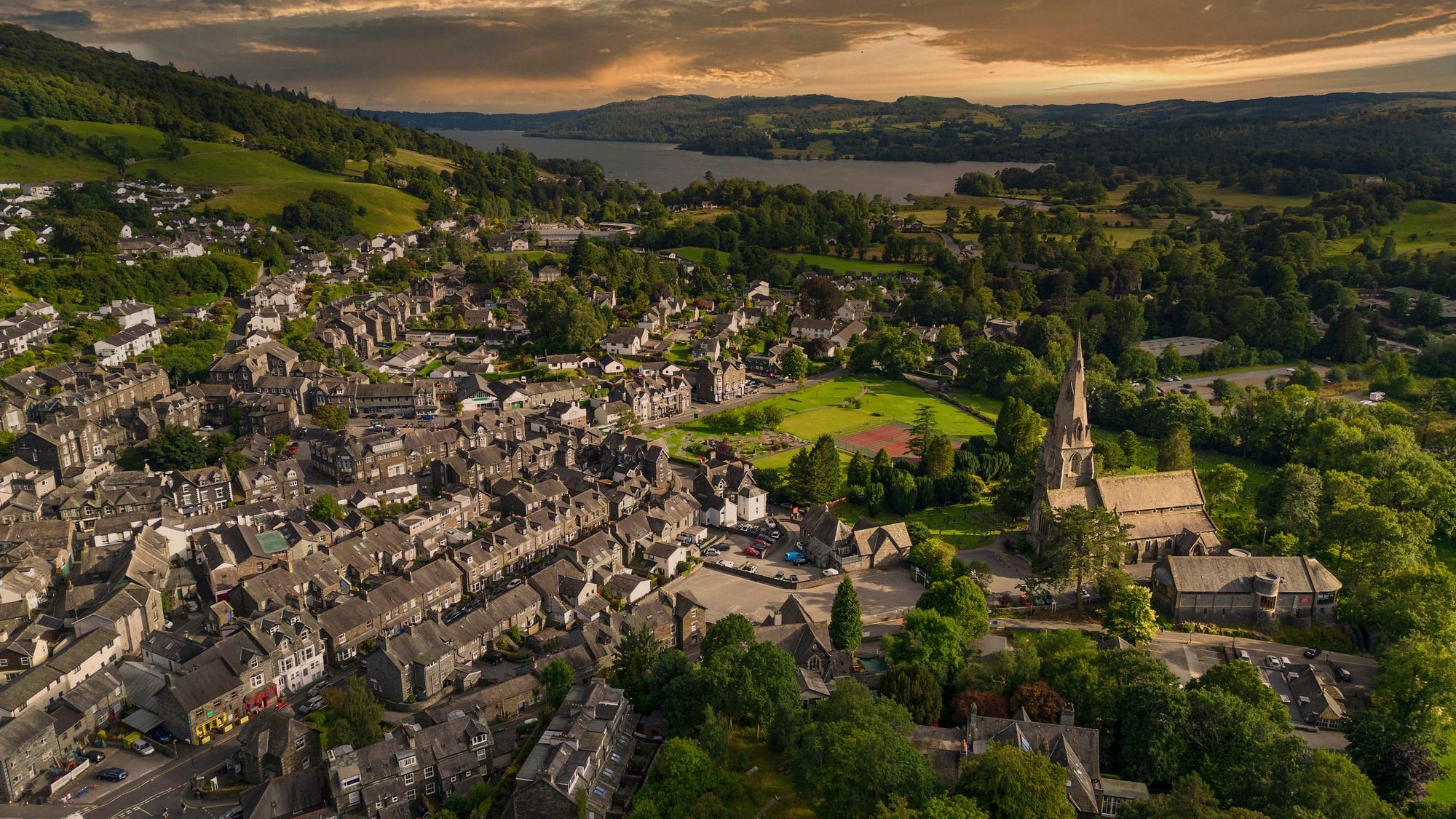From Roman to Romantic: Ambleside's 1945-Year Story
Ambleside is a well-known town in the Lake District, renowned for its picturesque views and tranquil, welcoming atmosphere. Sitting near the head of Windermere – England’s largest natural lake – it’s now part of the English Lake District UNESCO World Heritage Site, recognised in 2017 for its unique cultural landscape shaped by farming, tourism and the arts.
It may feel timeless, but did you know that its history dates back almost two thousand years, to the Roman period?
Whether you’re a history enthusiast or simply enjoy uncovering the layers of English heritage, join us as we step back in time and explore Ambleside’s rich past. There is far more to this small town than first meets the eye.
If you’re planning a trip to Ambleside soon, here’s what to look out for during your adventure.
Romans on Windermere
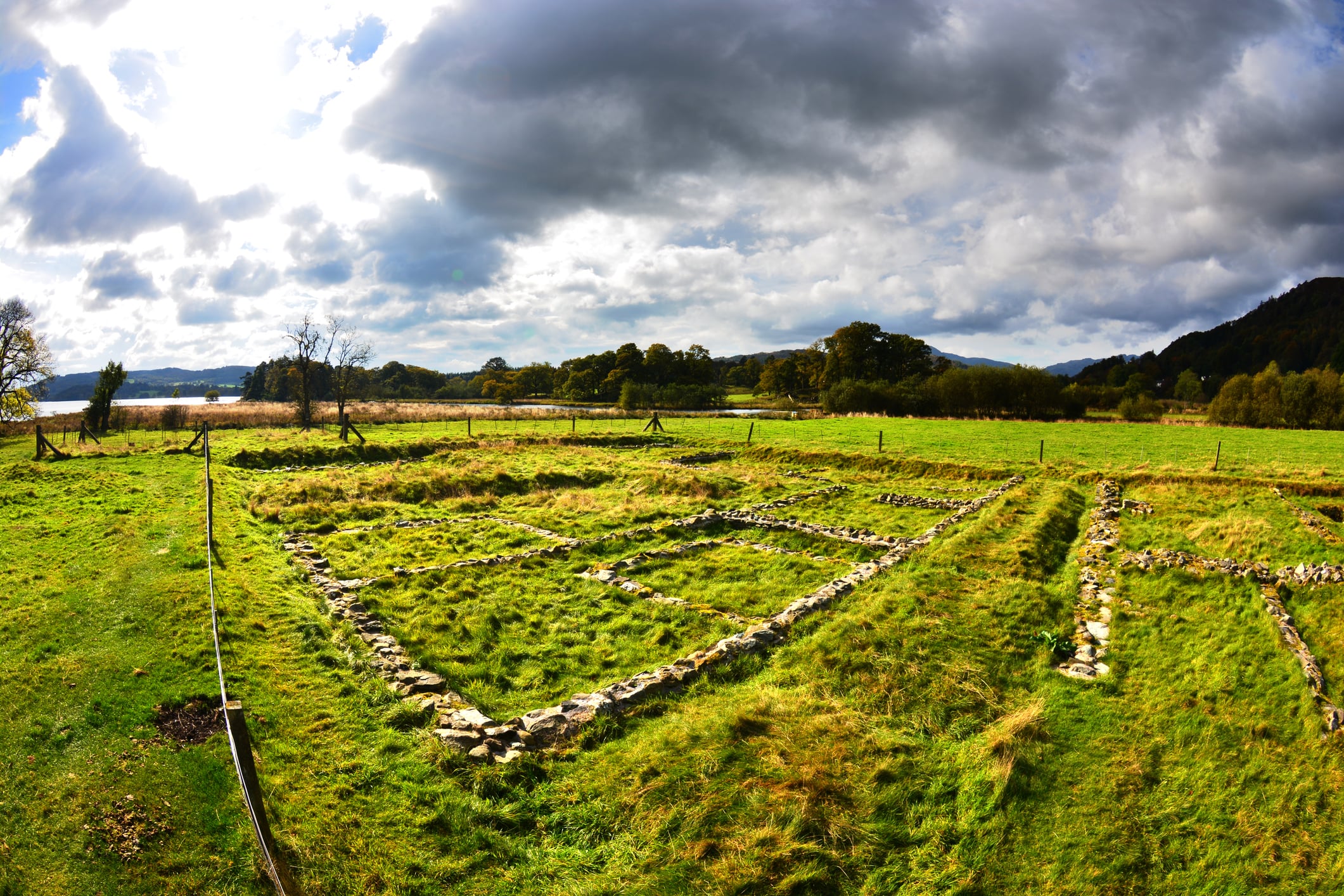 Exploring the remains of the Roman settlement at Waterhead. Image Credit: Bob-McCraight
Exploring the remains of the Roman settlement at Waterhead. Image Credit: Bob-McCraight
Long before Ambleside became popular with walkers and wanderers, Roman soldiers watched over the head of Windermere.
Their fort, known today as Galava, stood at Waterhead where the lake narrows into the Rothay Valley. Archaeologists date the fort to the late first or early second century AD, and English Heritage notes that it once housed a garrison of around 500 soldiers – a sizeable force for such a quiet spot today.
The Romans built here for a simple reason: a strategic crossroads linking the coast, the Pennines and the northern frontier. A garrison of around five hundred men guarded the route.
Today, you can explore the fort’s low stone outlines. The granaries, barracks and command buildings still sit quietly on the grass, giving you a chance to imagine daily military life in the first and second centuries. Finds from the site, including pottery and tools, are displayed at The Armitt Museum in Ambleside, helping to bring that story to life.
Despite its peaceful atmosphere now, during your visit you can stand for a moment and picture the bustle of marching feet, armour, and supply wagons during the Roman period.
Vikings, Markets and Mills
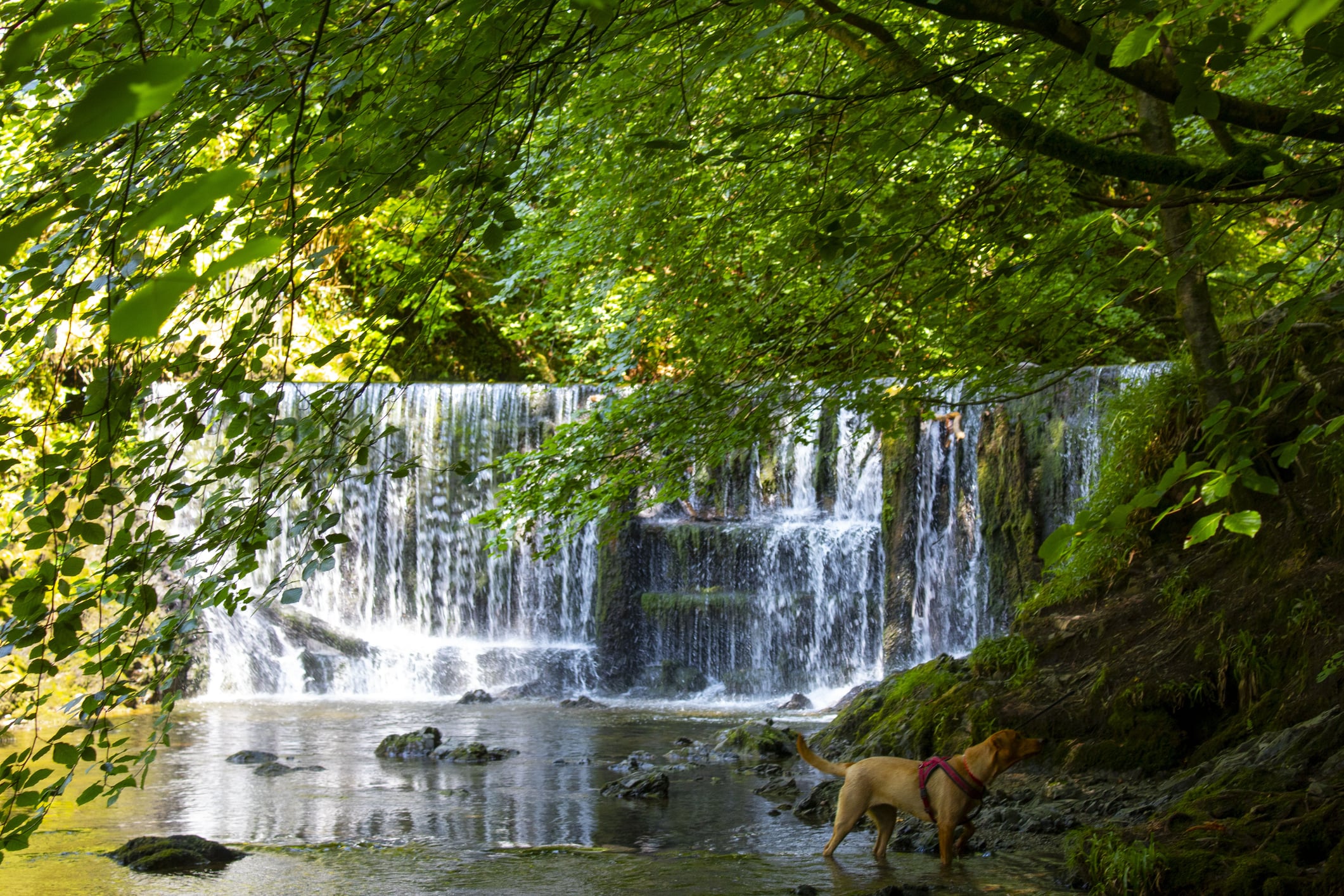 The force of Stock Ghyll is an incredible thing to see. Image Credit: Tom Newland Photography
The force of Stock Ghyll is an incredible thing to see. Image Credit: Tom Newland Photography
Centuries later, Norse settlers left their own mark on the valley.
The very name Ambleside comes from Old Norse – usually explained as Á-mel-sǽtr, meaning something close to “river, sandbank, summer pasture.” It’s a linguistic clue to the farms and homesteads that once stood here.
By the seventeenth century, the settlement had grown into a lively little centre.
A market charter granted in 1650 helped Ambleside become a place where wool, cloth and local produce were traded; the market cross built soon after can still be seen in the town today.
Water powered its progress. Stock Ghyll’s fast-flowing beck drove mills that produced everything from textiles to paper and bobbins, and their clatter shaped the town’s working rhythm for generations. At one point, local histories suggest there were around a dozen mills using this water power.
You can still follow the line of the water as it tumbles through the trees. The powerful roar of Stock Ghyll Force, a 70-foot cascade just above the town, offers a reminder that this landscape has always been a source of livelihood as much as beauty.
Bridge House: A Tiny Icon
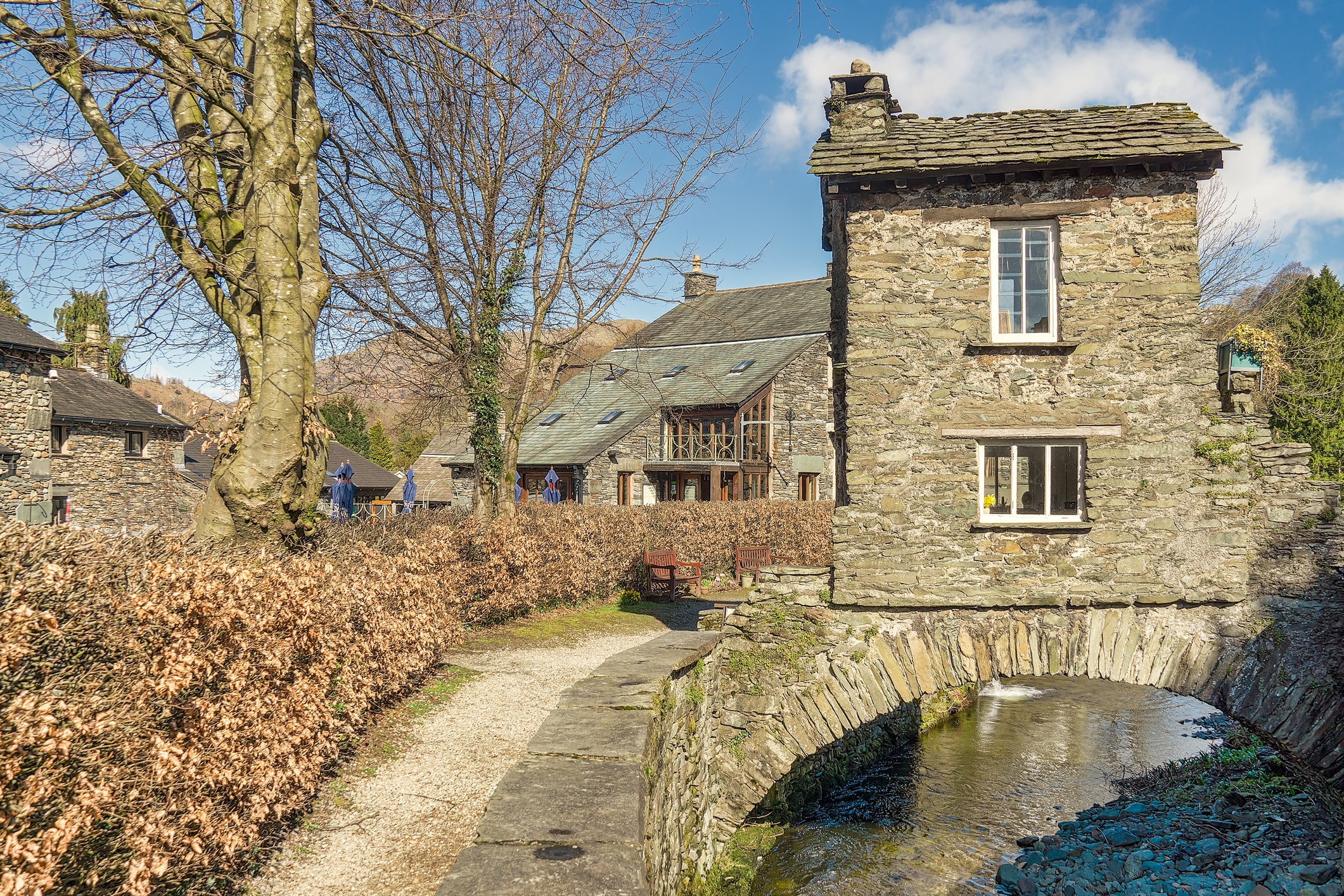 The Bridge House is one of Ambleside's most iconic attractions. Image Credit: Khrizmo
The Bridge House is one of Ambleside's most iconic attractions. Image Credit: Khrizmo
Of all Ambleside’s landmarks, Bridge House might be the most loved.
Perched above the beck on a narrow stone arch, this miniature building began life in the seventeenth century as a simple apple store for Ambleside Hall.
Its fame came later, when locals used it variously as a home, a shop and even an information point. Stories tell of large families squeezed into its tiny rooms, adding to its charm.
Today it is cared for by the National Trust and is often described as one of the most photographed buildings in the Lake District. It stands as a symbol of the town’s character: small, sturdy and full of stories, embodying Ambleside’s knack for preserving the past with a gentle touch.
From Picturesque to Romantic
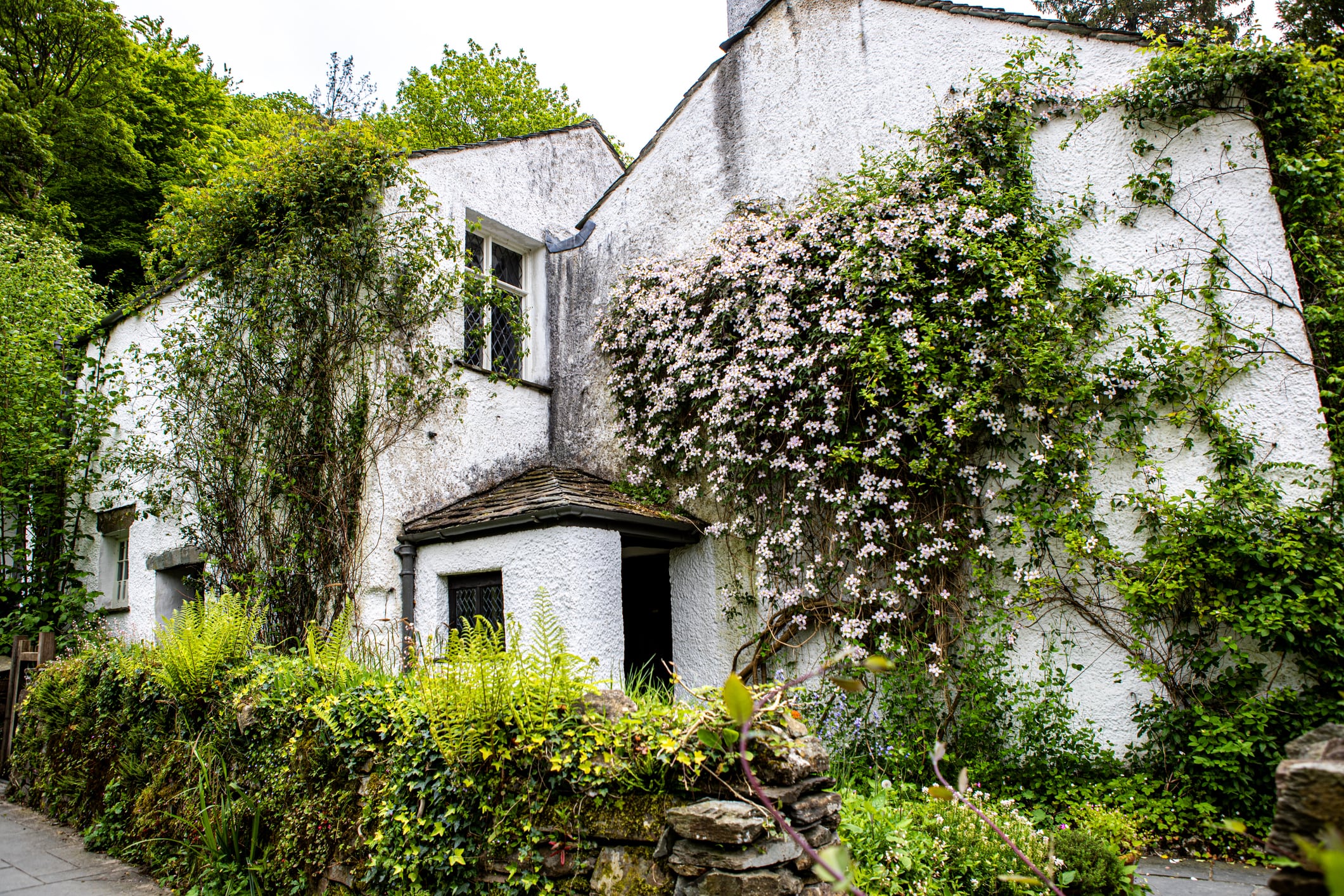 Dove Cottage; the humble abode of renowned poet William Wordsworth. Image Credit: TraceyAPhotos
Dove Cottage; the humble abode of renowned poet William Wordsworth. Image Credit: TraceyAPhotos
By the late 18th century, artists and writers arrived in search of inspiration.
The surrounding fells, lakes and wooded valleys were giving rise to ideas that would soon define the Romantic movement.
William Wordsworth lived only a short walk away, first at Dove Cottage in Grasmere (1799–1808) and later at Rydal Mount between Ambleside and Grasmere (1813–1850). His daily wanderings took him across the same lanes that visitors stroll today.
If you wish to follow this thread of history, The Armitt Museum offers a thoughtful look at local art, literature and natural history. Its collection includes Roman finds from Ambleside Roman Fort, Beatrix Potter’s fungi watercolours and works connected to the Lake District’s writers and artists, neatly connecting Ambleside’s creative past with the landscapes outside its doors.
This blend of scholarship and scenery is still one of the Lakes’ great pleasures. You can read a line of Wordsworth in the morning and see the very hillside that sparked it by afternoon.
Rails, Steamers and the Victorian Boom
Everything changed again with the arrival of the railway at Windermere in 1847.
The Kendal & Windermere Railway branch line opened fully in April that year, bringing trains from the main Lancaster–Carlisle route right to the lake’s eastern shore.
What had been a rural parish transformed into a gateway for travellers keen to explore the shores and summits of the central Lakes.
Steamers carried these new visitors up Windermere to Waterhead. From there it was only a short carriage ride into Ambleside, which soon grew a cluster of hotels and shops to meet the demand.
Victorian enthusiasm shaped much of the town’s present layout. As you wander today you walk through a place built for curious guests, one that still welcomes them with the same open arms.
Ambleside Today: World Heritage Heartland
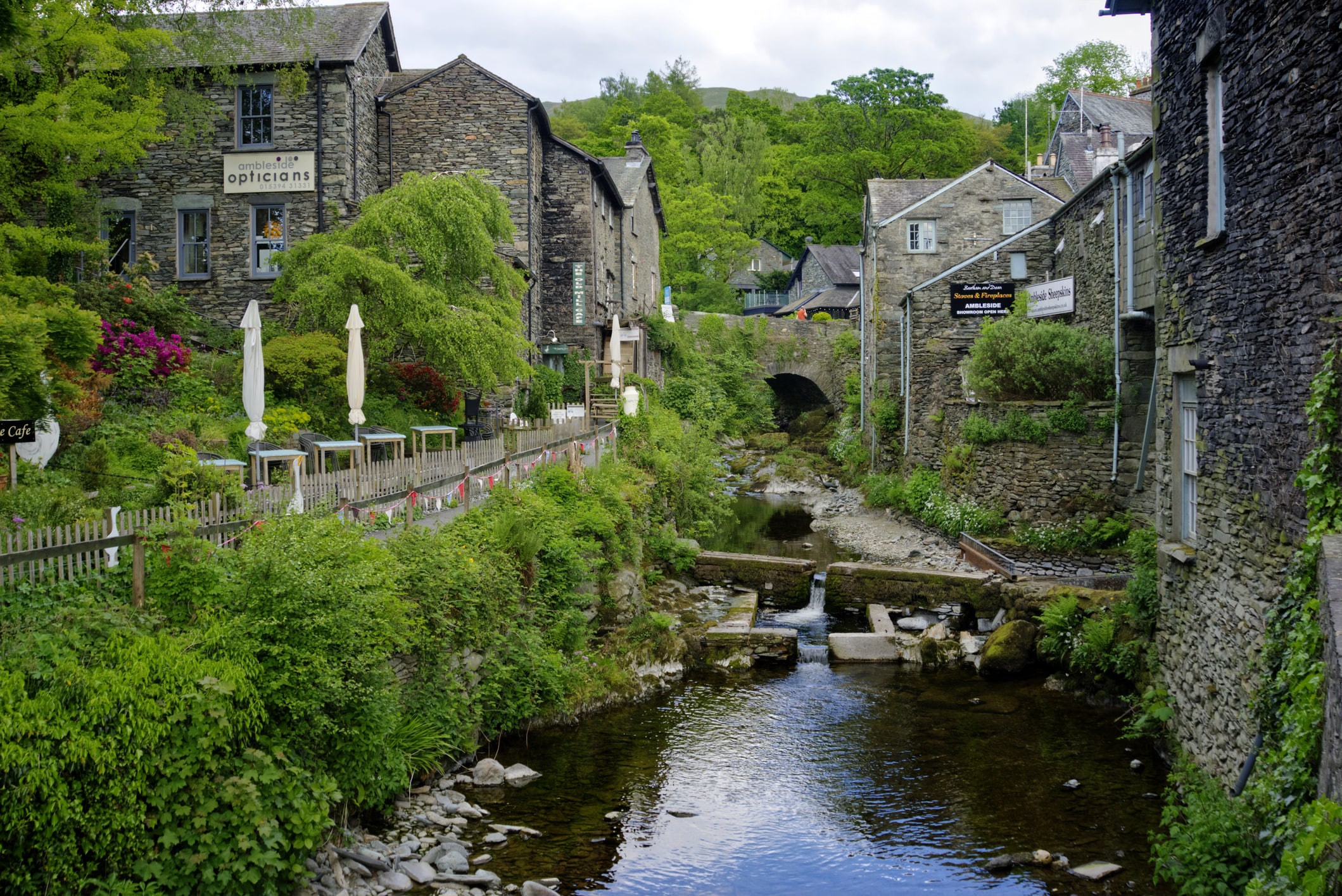 River Rothay running through Ambleside. Image Credit: ErithJohn
River Rothay running through Ambleside. Image Credit: ErithJohn
In 2017 the English Lake District was recognised as a UNESCO World Heritage Site, joining an international list that ranges from the Taj Mahal to the Great Barrier Reef.
The award honoured not only the landscape but also the long human story woven into it – from Roman forts and Norse place-names to Romantic poetry and conservation campaigns.
Ambleside sits at the heart of this cultural landscape. Roman walls, Norse names, market-town lanes and Romantic landmarks all share the same valley.
Today, the wider Lake District is England’s largest World Heritage Site and attracts over 18 million visitors each year, supported by a resident population of around 40,000. UNESCO in the UK+2Lake District National Park+2 This blend of nature and culture, locals and visitors, is what makes a stroll here feel so special. Every view has a trace of history tucked within it.
Plan Your Base Near Ambleside

To make the most of Ambleside, it helps to stay somewhere close yet peaceful.
Bowness-on-Windermere offers exactly that, with lake views, easy parking and quick access to the northern shore. Regular boat services and a short drive link Bowness with Ambleside, making it simple to move between the two.
The Ro Hotel sits here with an inviting sense of style and comfort. Its spacious rooms, relaxed dining and Hydro Wellness Club – complete with pool, hot tub, spa treatments and relaxation areas – make it an ideal base for exploring Ambleside and the wider Lakes.
After a day of forts, falls and fells, it is a pleasure to return to a warm welcome and a good meal.
Book Your Stay
Ambleside’s story stretches across nearly two thousand years, yet it remains wonderfully accessible.
Every chapter is within reach, waiting to be walked, explored and enjoyed.
If you are ready to discover it for yourself, check availability at The Ro Hotel and book your stay at our hotel in Bowness-on-Windermere. Your place by the lake is only a click away.
